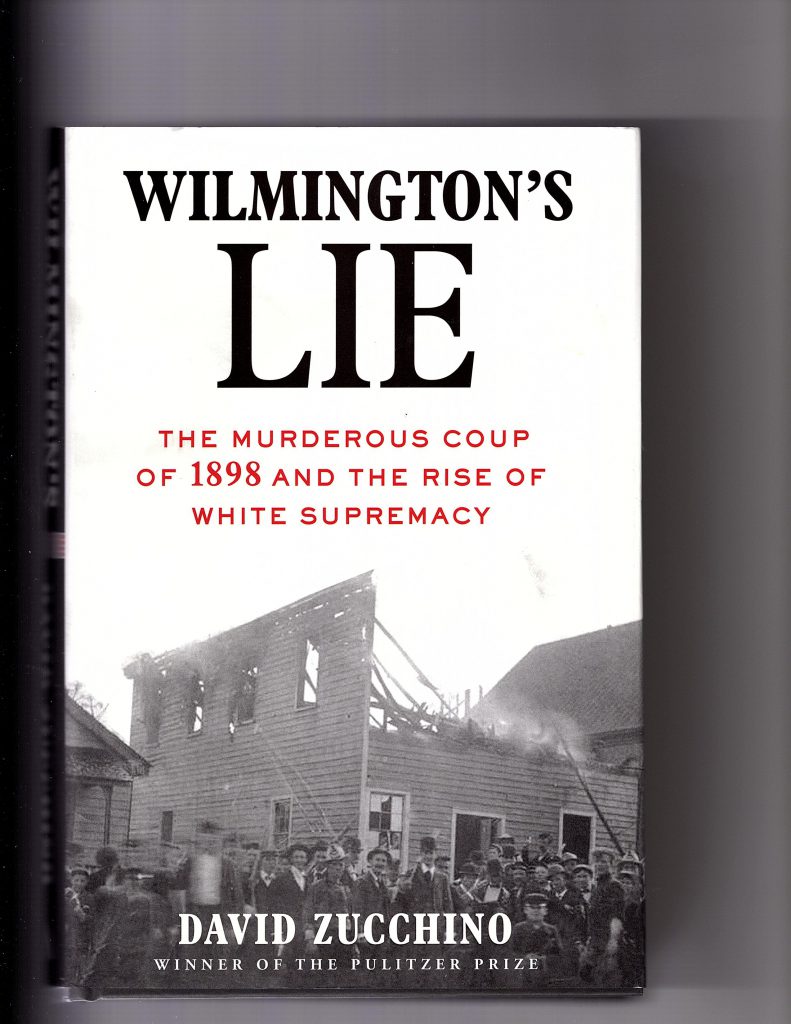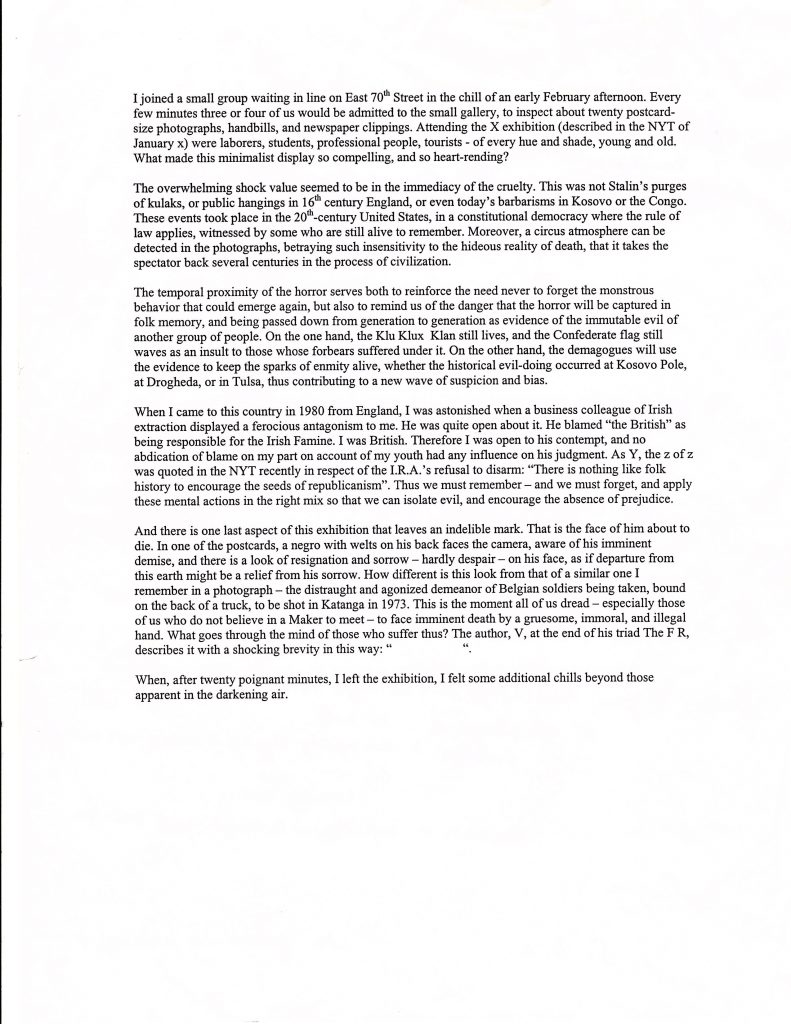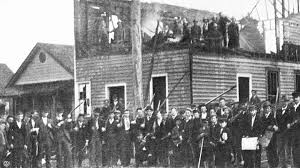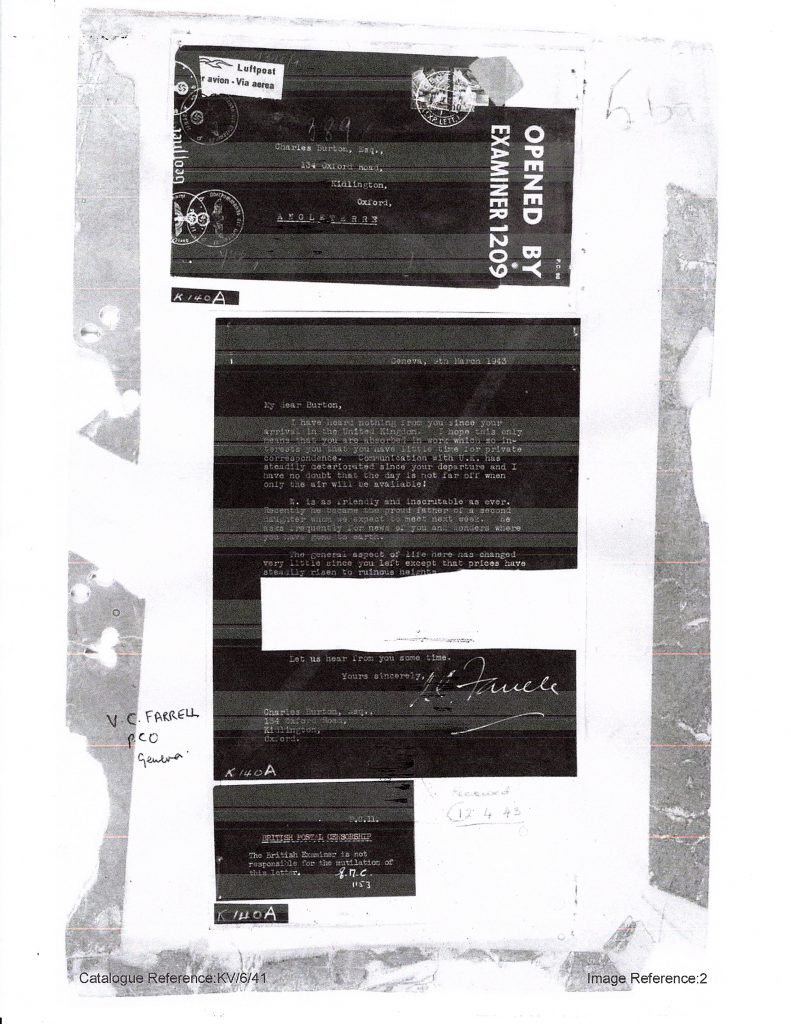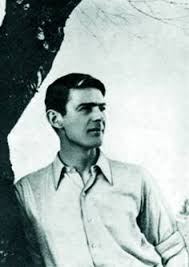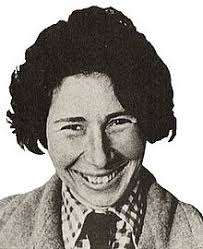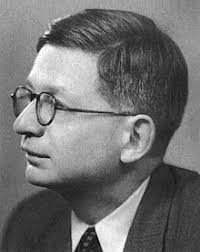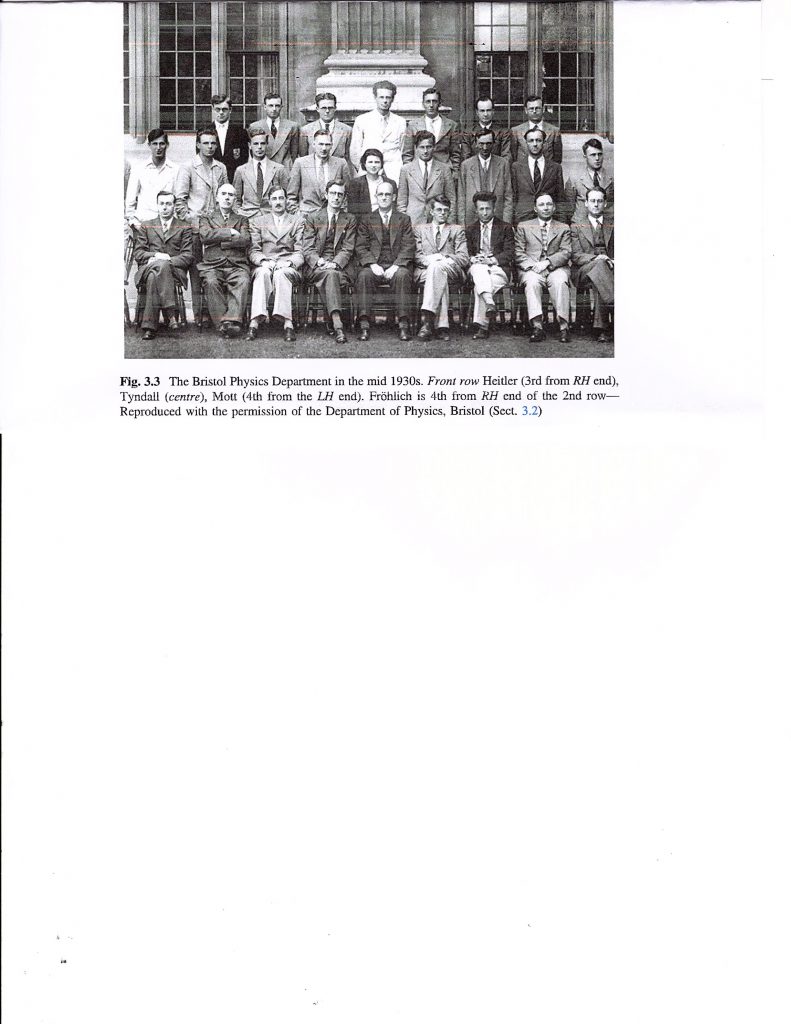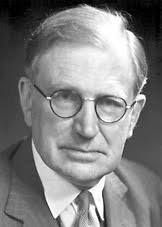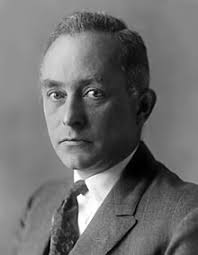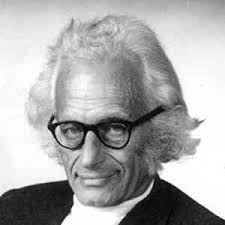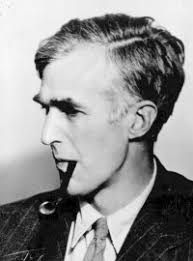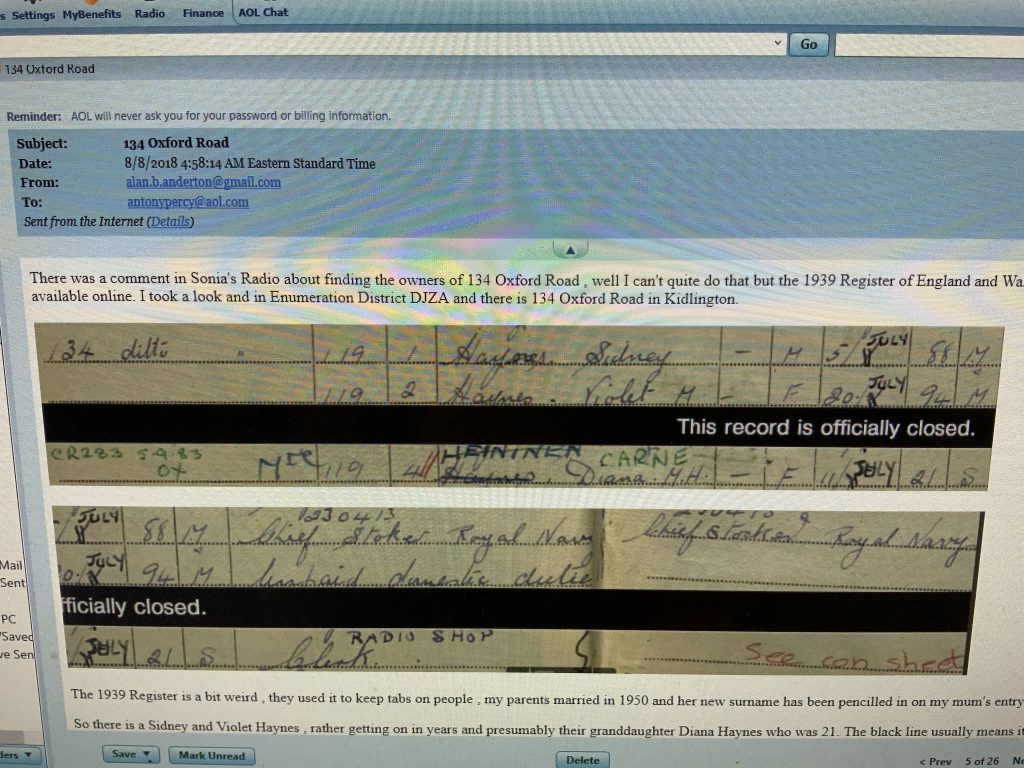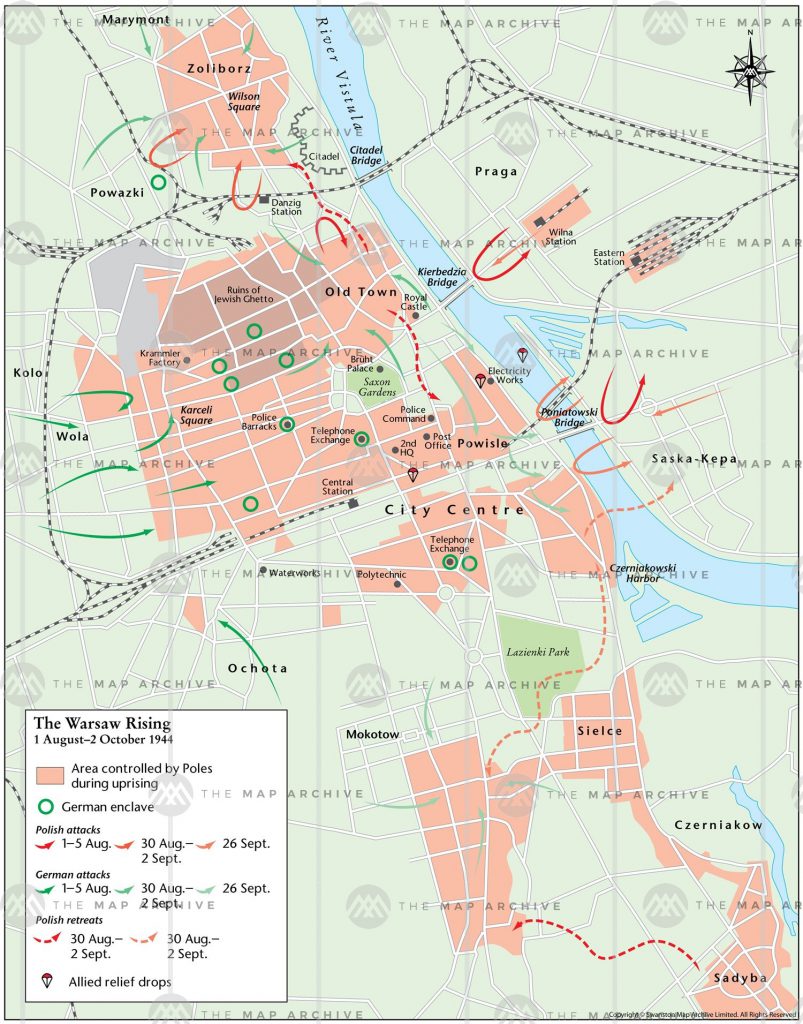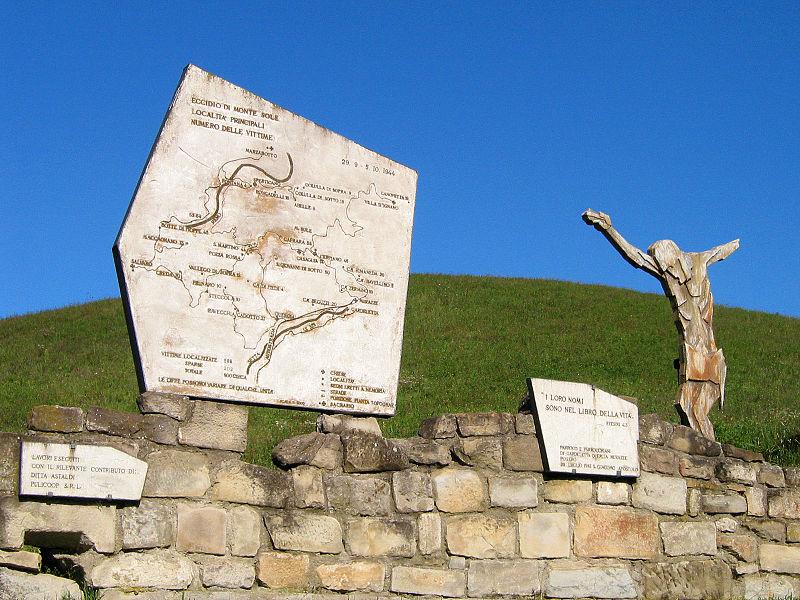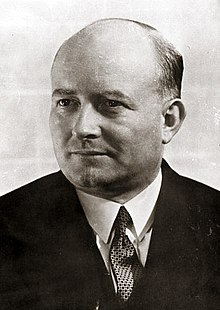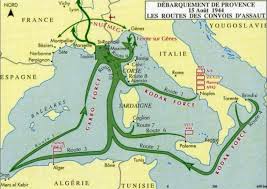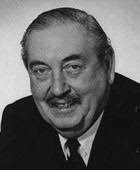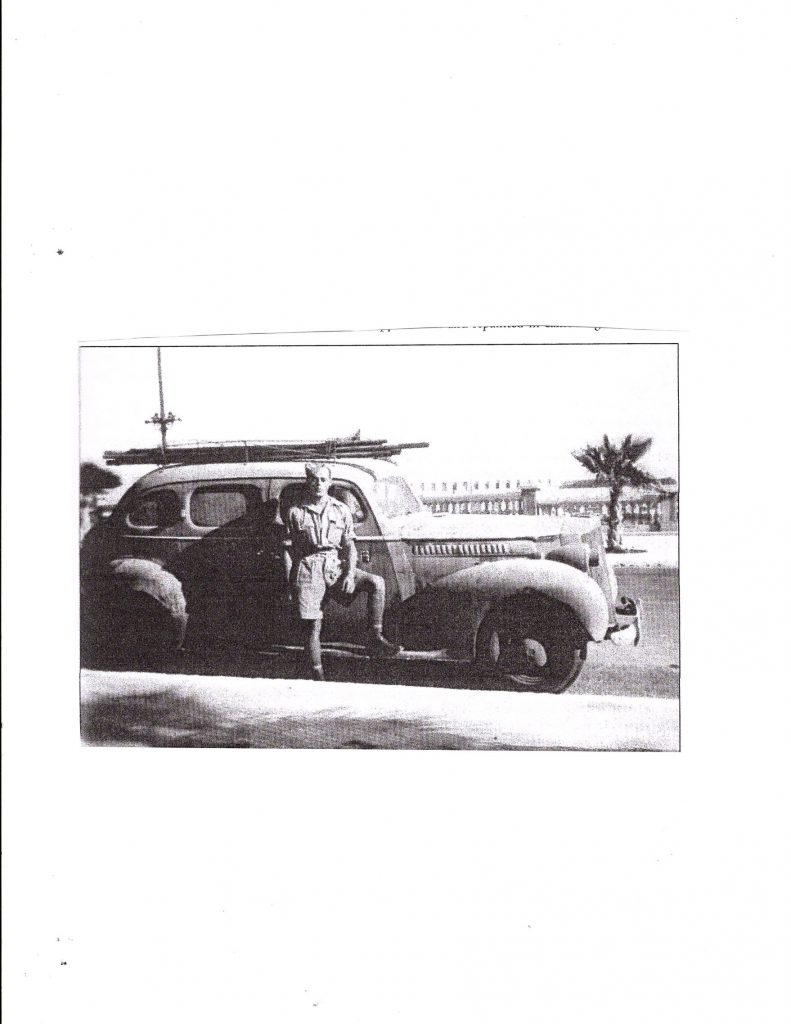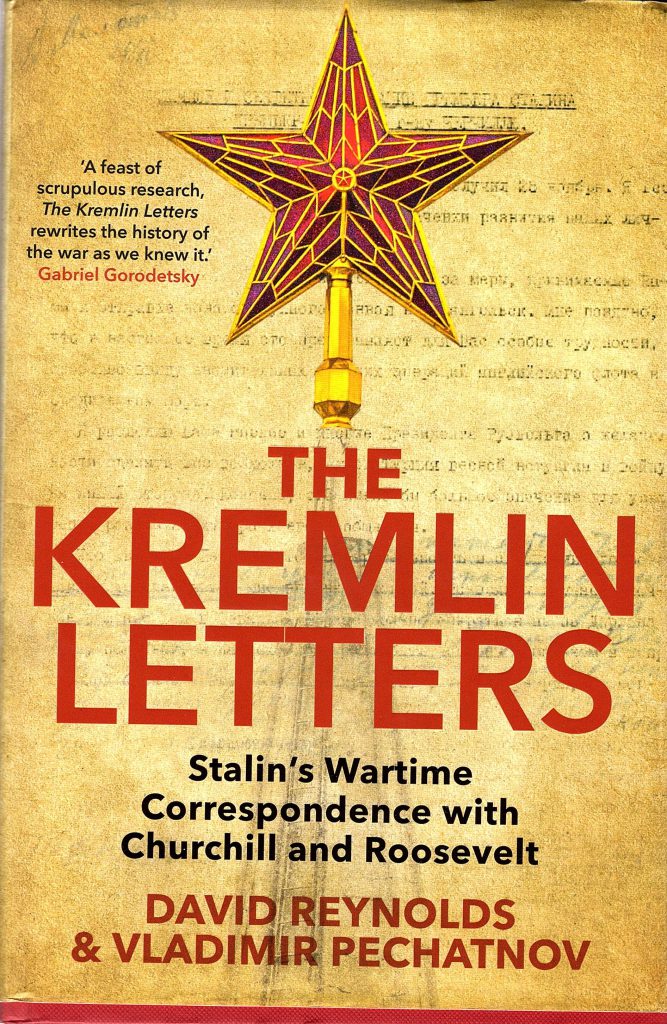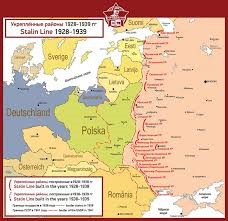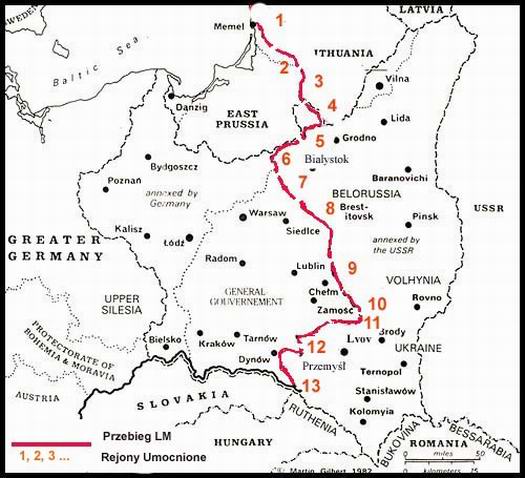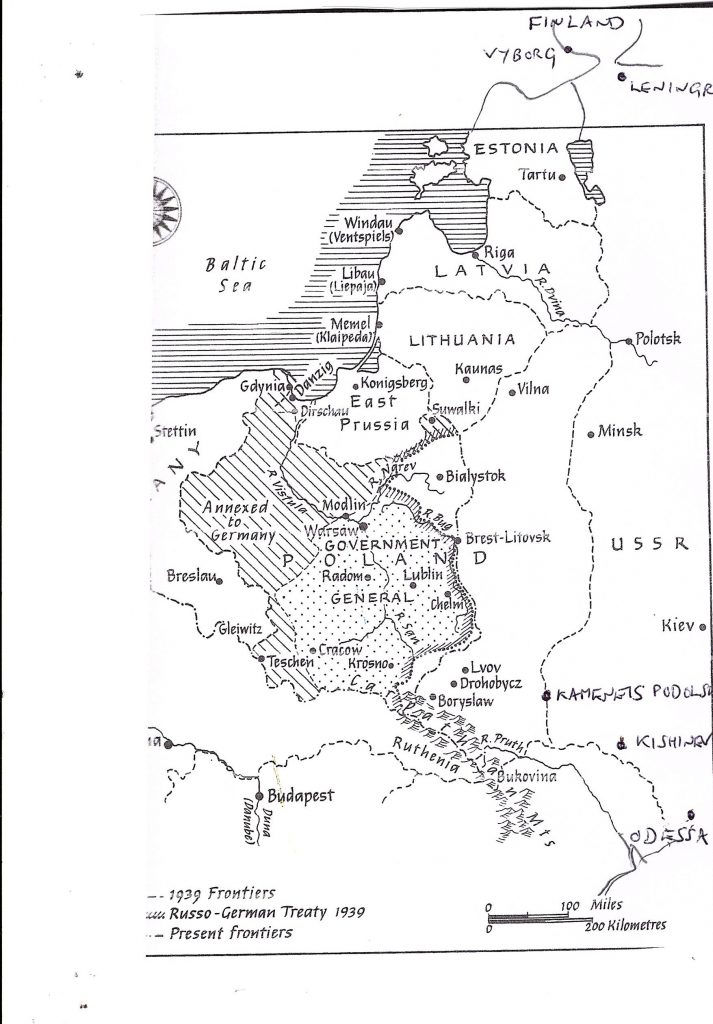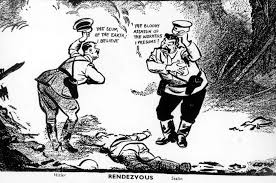
Dum spiro, conspiro
I was intending to publish this month the final chapter in the series The Mystery of the Undetected Radios, but was inhibited from doing so by the closure of the National Archives at Kew. I had performed 90% of the research, but needed to inspect one critical file to complete my story. Since my doughty researcher, Dr. Kevin Jones, will not be able to photograph it until we get the ‘All Clear’, the story will have to remain on hold. Instead, I use this month’s bulletin to sum up progress on a number of other projects.
Contents:
- Sonia and Len Beurton
- Ben Macintyre
- Prodding Comrade Stalin
- The National Archives and Freedom of Information
- Professor Frank Close at the Bodleian
- The BBC and Professor Andrew
- Nigel West’s new publications, and a look at ELLI
- The Survival of Gösta Caroli
- Dave Springhall and the GRU
- ‘Superspy Daughter in Holiday-camp Tycoon Romance Drama!’ (exclusive)
- China and the Rhineland Moment
Sonia and Len Beurton
I published the recent bulletin, The Letter from Geneva, because I believed it was important to get this story out before Ben MacIntyre’s book on Sonia appears. The fact that Len Beurton, Sonia’s bigamous husband, had acted as an agent-cum-informant for SIS in Switzerland seemed to me to be of immense importance for Sonia’s story, and the way that she was treated in the United Kingdom. Sonia herself wrote in her memoir that, when Skardon and Serpell came to interview her in 1947, they treated Len as if he were opposed to communism, rather than being an agent for it, abetting his wife as a recognized but possibly reformed spy or courier for Moscow, and the contents of the letter helped to explain why.
I wanted to have my conclusions published in a respectable medium, so as to have a more serious stake placed in the ground. I could not afford to wait for the more obscure journals on intelligence matters (and then perhaps get a rejection), and instead considered that the London Review of Books might be suitable. The editor, Mary-Kay Wilmers, could conceivably have a personal interest in the story (she is an Eitingon, and has written about her grandfather’s cousin Leon, who managed the project to kill Trotsky). The LRB frequently runs long articles on off-beat subjects (in fact, it runs so many earnest leftish political pieces that one sometimes forgets what its mission is supposed to be), and it could presumably turn round my piece quickly. I thus sent my bulletin, as an exclusive, to Ms. Wilmers, with a covering letter explaining the appeal it could have to her readers, the opportunity for a scoop, and describing how I would re-work my article to make it a suitable contribution for her periodical.
After a week, I had heard nothing – not even an acknowledgment. (Coldspur 0 : The Establishment 1) So I made a similar approach to the Times Literary Supplement, with obviously different wording in the cover letter. The Editor, Stig Abell (who had, after all, commissioned a review of Misdefending the Realm a couple of years ago), responded very promptly, and informed me he was passing my piece to a sub-editor to review. A couple of days later, I received a very polite and appreciative email from the sub-editor, who offered me his regrets that he did not think it was suitable for the periodical. That was it. I thus decided to self-publish, on coldspur. (Coldspur 1 : The Establishment 1)
I have since been in contact with a few experts on this aspect of Sonia’s and Len’s case, and have discussed the puzzling circumstances of the letter, why Farrell chose that method of communication, and how he must have expected its passage to be intercepted. Why did he choose private mail instead of the diplomatic bag? Would the diplomatic bag have taken the same route as airmail, and would the German have opened that, too? Why did he not send an encrypted message over cable (although the consulate had probably run out of one-time pads by then), or wireless to SIS in London? Presumably because he did not want Head Office to see it: yet this method was just as risky. And what kind of relationship did he possibly think he could nurture with Len in those circumstances? No convincing explanation has yet appeared.
Ben Macintyre
Meanwhile, what about Ben Macintyre’s forthcoming book on Sonia, Agent Sonya, subtitled variously as Moscow’s Most Daring Wartime Spy, or as Lover, Mother, Soldier, Spy? The publisher indicates that it is ‘expected on September 15, 2020’, yet Mr. Macintyre himself seems to be lagging a bit. His US website (to which I was directed at http://benmacintyre.com/US/ ) shouts at us in the following terms: ‘The Spy and the Traitor Arriving September 2018’, but even his UK website needs some refreshment, as it informs us that the paperback edition of his book on Gordievsky will be published on May 30, 2019 (http://benmacintyre.com/about-the-author/ ), and lists events in 2019 where the author will be signing copies of the same book. Wake up, Benny boy! This is 2020.
So, back to the publisher of Agent Sonya, where we can find information at https://www.penguinrandomhouse.com/books/612487/agent-sonya-by-ben-macintyre/ . The promotional material includes the following passage: “In 1942, in a quiet village in the leafy English Cotswolds, a thin, elegant woman lived in a small cottage with her three children and her husband, who worked as a machinist nearby. Ursula Burton was friendly but reserved, and spoke English with a slight foreign accent.” This is all rather disturbing, however. Sonia’s husband, Len, returned from Switzerland only in July 1942, and they lived in Kidlington for a short time before moving to Summertown, in Oxford. Her third child, Peter, was not born until 1943. Len did not work as a machinist at that time, since he was unemployed until called up by the R.A.F. in November 1943. And their name was not ‘Burton’ but ‘Beurton’. Still, ‘thin’ and ‘elegant’ might, with a little imagination, conceivably be accurate, and she surely spoke English with a foreign accent. Not a promising start, however.
Macintyre has updated his blurb, apparently. The Waterstone’s site (https://www.waterstones.com/book/agent-sonya/ben-macintyre/2928377041403?utm_source=wsnfpreorderA230520&utm_medium=email&utm_campaign=preorders ) tells a different story. The year has been corrected to 1944, where Sonia is pedalling her bicycle to ‘gather secrets from a nuclear physicist’. The only problem with this scenario is that Klaus Fuchs had left for the United States in December 1943.
So what is ailing our intrepid journalist? I hope things improve from here onwards. I shall place my advance order, and await the book’s arrival, as expectantly as the publisher itself. In fact, I heard from my sources earlier this month that Macintyre has started ‘tweeting’ about his new book. Meanwhile, I believe I have taken the necessary initiative by posting my analysis first. (Coldspur 2 : The Establishment 1)
Prodding Comrade Stalin
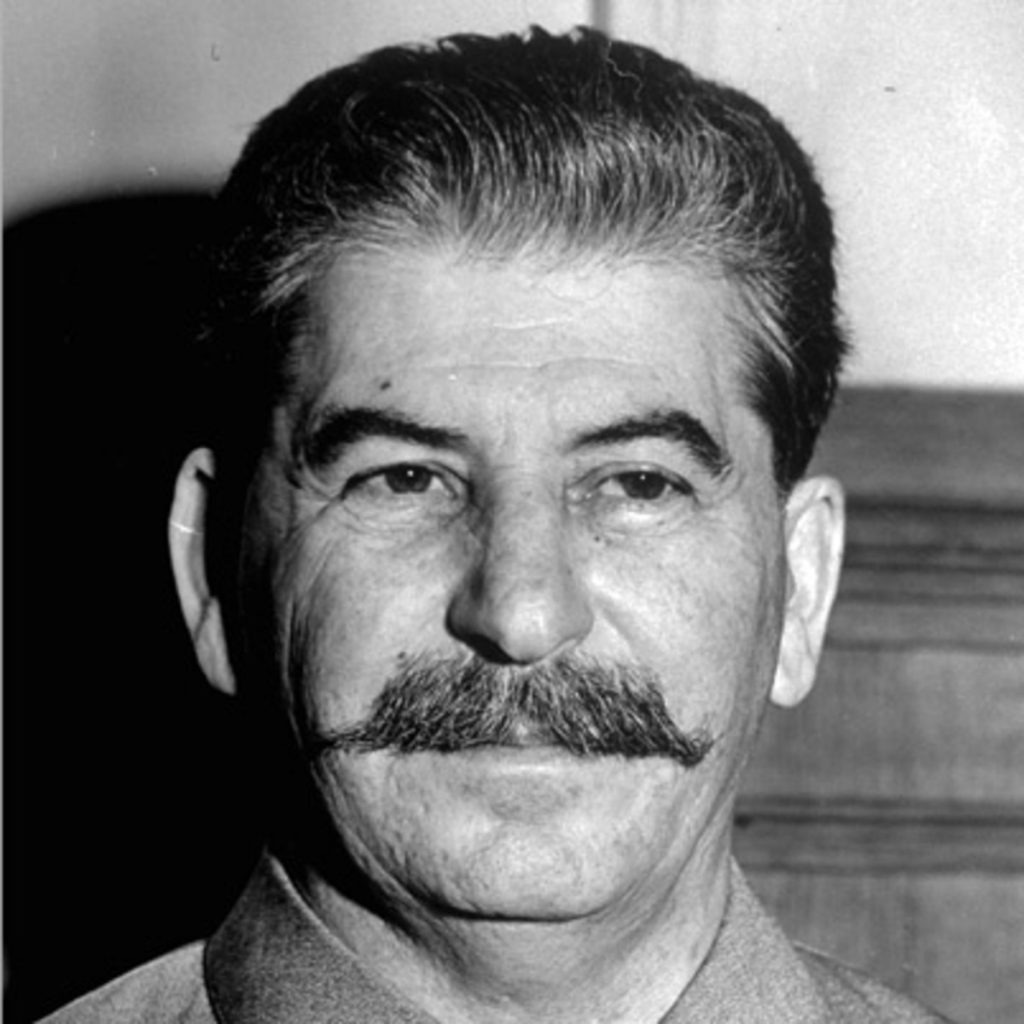
It continues to dismay me how Stalin’s pernicious influence casts a depressing and inaccurate shadow over the history of the twentieth century. We can now read how President Putin attempts to resuscitate the days of the Great Patriotic War, emphasising Stalin’s role as a leader, and minimising events such as the Nazi-Soviet pact or the massacres of the Katyn Forest. At the end of last month, the New York Times carried a story that described how the Russian authorities have tried to discredit an amateur historian who discovered mass graves of Stalin’s victims in Sandarmokh in Karelia, near the White Sea. The State Military society is arguing that ‘thousands of people buried at Sandarmokh are not all Stalin’s victims but also include Soviet soldiers executed by the Finnish Army during World War II’, which is palpable nonsense.
Thus my disgust was intense when I read an article by one Lionel Barber in the Spectator of April 4. It included the following passage:
“Covid-19 is indeed the Great Leveller. Conventional wisdoms have been shattered. But crises offer opportunities. Wise heads should be planning ahead. FDR, Churchill, and, yes, Stalin lifted their sights in 1942-43 as the war against Nazi Germany began to turn. Prodded by gifted public servants like Keynes and others, these leaders thought about the future of Europe, the balance of power and the institutions of the post-war world.”
The idea that Stalin could have been ‘prodded’ by ‘gifted public servants’ is a topic to which perhaps only Michael Wharton (Peter Simple of the Daily Telegraph) could have done justice. I can alternatively imagine a canvas by Repin, perhaps, where the wise Stalin strokes his chin as he listens to a deputation from the Ministry of Economic Affairs, as if saying: ‘You make a strong point there, Alexey Dimitrovich. Maybe world revolution is no longer necessary. I shall change my plans immediately.’ I was propelled into sending a letter to the Editor of the magazine, which ran (in part) as follows:
“I wonder whether the Stalin Mr. Barber refers to is the same Joseph Stalin who incarcerated and killed millions of his own people, and then, after the war, enslaved eastern Europe, killing many of its democratic leaders and thousands of those who defied him, as he prepared for the inevitable collision with the ‘capitalist’ west? I doubt whether the despot Stalin was ‘prodded’ by anyone, except possibly by a distorted reading of Marx and Lenin, and certainly not by ‘gifted public servants’, whether they were Keynesian or not. The ‘future of Europe’, especially that of Poland, was a topic that, after Yalta, caused a sharp rift between the Allies, and led to the Cold War. Where did Mr. Barber learn his history?”
The Editor did not see fit to publish my letter. I do not know what is the saddest episode of this exercise: 1) The fact that Lionel Barber, who was Editor of the Financial Times from 2005 until January of this year, and is thus presumably an educated person, could be so desperately wrong about the character and objectives of Stalin; 2) The fact that the Editor of the Spectator was not stopped in his tracks when he read this passage, and did not require Mr. Barber to modify it; 3) The fact that no other Spectator reader apparently noticed the distortion, or bothered to write to the Editor about it; or 4) The fact that the Editor, having read my letter, determined that the solecism was so trivial that no attention needed to be drawn to it. (Coldspur 2 : The Establishment 2)
To remind myself of the piercing insights of Michael Wharton, I turned to my treasured copy of The Stretchford Chronicles: 25 Years of Peter Simple, and quickly alighted on the following text, from 1968:
Poor old has-beens
“The Soviet Government,” said a Times leader writer the other day, “has become hopelessly outdated and out of touch with contemporary movements at home and abroad.”
So the Soviet Government is hopelessly outdated, is it? It has just imposed its will on the Czechs and Slovaks by force. And this is supposed to be hopelessly outdated in an age which, thanks to perverted science (a highly contemporary movement if there ever was one), has seen and will see force repeatedly and successfully applied on a scale undreamed of by the conquerors of the past.
So force is outdated. Treachery is outdated. War is outdated. Pain is out dated. Death is outdated. Evil itself is not only outdated but out of touch with contemporary movements at home and abroad.
That a writer, presumably intelligent, certainly literate and possibly able to influence the opinions of others, can believe these things is positively terrifying. If the Russian Communist leaders, as we are told day in day out, are now cowering in the Kremlin in a state of extreme terror here is some little comfort for them.
When Soviet tanks are on the Channel Coast, shall we still be telling ourselves that the Soviet Government is outdated and out of touch? As we are herded into camps for political re-education or worse, shall we still go on saying to each other, with a superior smile: ‘This is really too ridiculously outdated for words. I mean, it’s quite pathetically out of touch with contemporary movements at home and abroad.’?”
There was as much chance of Brezhnev and his cronies paying heed to ‘contemporary movements at home and abroad’ in 1968 as there was of Stalin being prodded ‘by gifted public servants’ in 1946. Pfui!
As a final commentary on this calamity, a few weeks ago I read Norman Naimark’s Stalin and the Fate of Europe, published last year, which explained how duplicitous Stalin was in his dealings with western political entities, and how he restrained European communist parties until the Soviet Union successfully tested the bomb in August 1949. One of the books cited by Naimark was Grigory Tokaev’s Stalin Means War, published in 1951. I acquired a copy, and read how, in 1947, Colonel Tokaev had been commissioned by Stalin to acquire German aeronautical secrets, by any means necessary, including the kidnapping of scientists, to enable the Soviet Union to construct planes that could swiftly carry atomic bombs to New York. Thus would Stalin’s plans for world revolution be enforced.
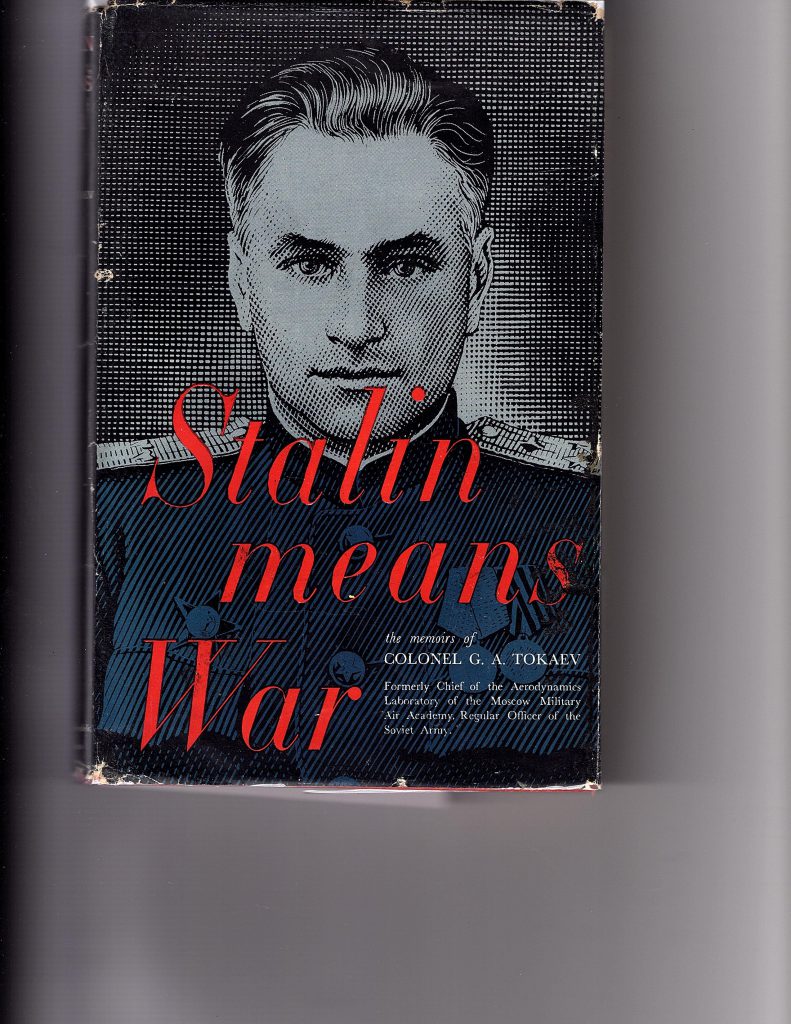
I do not think this book is a hoax. Tokaev managed to escape, with his wife and young daughter, to the United Kingdom at the end of 1947, where he had a distinguished academic career, and managed to avoid Moscow’s assassins. He died in 2003, in Cheam, in leafy Surrey, just a few miles from where I was born and grew up. I wish I had had the honour of shaking his hand. His book provides undeniable evidence that Stalin was not listening to gifted civil servants, and musing about the peaceful organisation of the world’s institutions. He wanted war.
The National Archives and Freedom of Information
In my recent piece on Rudolf Peierls (The Mysterious Affair . . . Part 2) I drew attention to the increasing trend for archival material that had previously been released to be withdrawn and ‘retained’. Further inspection, prompted by a deeper search by Dr. Kevin Jones, reveals that an enormous amount of material is no longer available, especially in the ‘AB’ (records of the Atomic Energy Authority) category. I have counted 43 files alone in AB 1, 2, 3, & 4, mainly on Rudolf Peierls, including his correspondence, as well as multiple reports on Pontecorvo, and including Fuchs’s interview by Perrin. For instance, if you look up AB 1/572, you will find a tantalising introduction to the papers of Professor Peierls, described as ‘Correspondence with Akers, Arms, Blackman [Honor?], Blok, Bosanquet [Reginald?], Brown . . .’, from the period 1940-1947: yet the rubric informs us that ‘This record is closed while access is under review’.
I suspect some of these files may never have been made available, but it is hard to tell unless one has been keeping a very close watch on things. For example, the file on Perrin’s interviews with Fuchs (AB 1/695) has been well mined by other researchers, and the fact that the statement ‘Opening Date: 16 July 2001’ appears below the standard message would suggest that this file has indeed been withdrawn after a period of availability. But does the lack of any such date indicate that the file was never released, or is the absence merely the inconsistent application of policy? Several months ago, I referred to another provocative file, HO 532/3 (‘Espionage activities by individuals: Klaus Fuchs and Rudolf Peierls’),which has a different status of ‘Closed or Retained Document: Open Description’, where the rubric reads ‘This record is retained by a government department’, and has never been sent to the National Archives. It puzzles me somewhat as to why the Home Office would even acknowledge the existence of such a controversial file, as an open description without delivery just encourages speculation, but I suppose that is how bureaucracy works, sometimes.
Dr. Jones (who has made it his speciality to find his way among prominent archives) offered me his personal interpretation, which may be very useful for other researchers. He wrote to me as follows:
- “Where a file is stated to be ‘closed while access is under review’, but has ‘Open Document’ in the ‘Closure status’ field (e.g. AB 1/572), then the file has always been available, until its ‘disappearance’.
- Similarly, as with AB 1/695, if there is a specific ‘Record opening date’ the previously retained file was made available from that date, again until its ‘disappearance’.
- With the likes of HO 532/3, where it is stated ‘Retained by Department under Section 3.’”, the file has indeed never been available.
- Many of these ‘Retained’ files do reveal the file’s title (the ‘Open Description’) to tantalise the researcher, but many such files are listed in the catalogue with no title/description.
- Where a specific government department is named in a retained file entry (e.g. FO, MOD, etc.), it is obliged to process a FoI request, though don’t expect a quick response, especially if they are composing various forms of waffle to justify not releasing the file! When the ‘government department’ is not named (as with HO 532/3), there is good chance it is retained by MI5/MI6, both of which are exempt from the FoI Act (well, certainly the latter, which also holds the retained SOE files; not 100% sure about MI5). In any instance, click the ‘Contact Us’ button and the TNA’s FoI team will inform you of the good/bad news.”
Occasionally, therefore, the researcher is invited to submit an FoI (Freedom of Information) request, as an attempt to challenge the status of the censored file. I performed this over the above Espionage file, on the grounds that no conceivable reason could be justified for withholding it now that the subjects (and their offspring) are all dead, but received just an acknowledgment. My colleague Denis Lenihan had approached GCHQ concerning the HASP file (referred to by Nigel West and Peter Wright), which was claimed to contain transcripts of Soviet wireless messages intercepted in Sweden during WW II. Denis requested its release, as no conceivable aspect of British security could be damaged through its publication, but his request was rejected by the GCHQ Press Office (as if it were simply a matter of PR).
Denis then brought my attention to another statutory body whither appeals could be sent – the Investigatory Powers Tribunal. I had just read an article in the Historical Journal of March 2014, by Christopher J. Murphy and Daniel W. B. Lomas (‘Return to Neverland? Freedom of Information and the History of British Intelligence’), which very quickly explained that ‘the intelligence and security services fall outside its provisions, in marked contrast to the comparable legislation in the United States . . .’ I thus wondered why we bothered, and under what circumstances any of the security services (MI5, SIS, GCHQ) would feel they should have to even consider such requests. But, after all, Kew does advertise the facility: is it an exercise in futility?
Denis wrote to me as follows: “While they’re right about the FOI legislation, the security agencies react in odd but sometimes helpful ways. I remember Pincher saying somewhere that the Romer Report (re the Houghton/Molody/Kroger case) was obtained from MI5 by someone who applied under FOI. I once sought a document from MI5 and got the classic Sir Humphrey response: ‘while MI5 is not subject to the FOI Act, it has been decided to treat your application under that Act. It has been unsuccessful’.” That was rich – so generous! Then Denis went on to say that the authors of the article appeared not to be aware of the Investigatory Powers Tribunal, to which he had turned with the HASP material. (On his recommendation, I made a companion request, referring to the fact that a reference to HASP was evident on some of the RSS records, and that it was thus in the public interest to make the material available. I have since conducted some deep research into the HASP phenomenon: I shall report in full in next month’s coldspur.)
I followed up Denis’s valuable lead to Chapman Pincher’s Dangerous to Know. Pincher’s account of the application, and its rejection, can be seen in the chapter ‘The Elli Riddle’, on pages 318 and 319. An official of the Intelligence and Security Committee suggested that Pincher complain to the Tribunal about MI5’s lack of action on a ‘missing’ report on Gouzenko made by Roger Hollis. The Tribunal had been set up in 2000, under the Human Rights Act, to consider complaints about the public authorities, but Pincher had, surprisingly, never heard of it. It took notice of Pincher’s request (would it have paid heed to submissions by those of lesser standing, without a platform in the media?), and required MI5 to respond on the status of the Hollis report.
MI5 sent two items of correspondence to Pincher, stating that ‘despite an extensive search of the Service’s archives ‘it had to conclude that no record of the important interview was ever made’. And that appeared to be the end of the affair – until William Tyrer, through an astonishing display of terrier-like determination, managed to extract a copy from MI5, having first discovered a reference to a vital telegram in the Cleveland Cram archive. Tyrer wrote up his conclusions in 2016, in an article in The International Journal of Intelligence and Counter-Intelligence (see https://www.tandfonline.com/doi/abs/10.1080/08850607.2016.1177404), and Denis Lenihan has analysed Tyrer’s findings in Roger Redux: Why the Roger Hollis Case Won’t Go Away.
As the Tribunal’s website (https://www.ipt-uk.com/ ) explains, the Investigatory Powers Act of 2016 did strengthen provisions for the public to make appeals, but it is not clear to me that the withholding of files really fits into what the IPT declares its mission, namely ‘a right of redress for anyone who believes they have been a victim of unlawful action by a public authority using covert investigative techniques’. That sounds more like heavy-handed surveillance techniques, or officers and agents masquerading as person they were not in order to infiltrate possibly dissident groups. And the organisation has a very bureaucratic and legalistic methodology, as the recent decision on an MI5 case shows (see: https://www.ipt-uk.com/judgments.asp, and note that the Tribunal cannot spell ‘Between’). It is difficult to see how the body could sensibly process a slew of failed FoI requests. And what about the Home Office, retaining aged documents? That doesn’t come under the grouping of security services.
Yet all of this fails to grapple with the main question: why has the Government suddenly become so defensive and concerned about records dealing with matters of atomic power and energy, most of them over seventy years old, and many of which have already been dissected in serious books? In the articles to which I provided links beforehand, Michael Holzman and Robert Booth say it all. The lack of a proper explanation is astounding, and the blunderbuss approach just draws even more attention to the fact that the civil service is out of control. Did Peierls’s letters to Blok and others betray some secrets that would be dangerous for the country’s foes to get hold of? I cannot imagine it. Maybe all will be revealed soon, but the furtive and uncommunicative way in which these files are being withheld just induces more distrust of the authorities, and their condescending attitude to the public. (Coldspur 2 : The Establishment 3)
Professor Frank Close at the Bodleian

My status as Friend of the Bodleian entitles me to attend events staged by that institution, and a couple of months ago I received the following invitation: “Our first video by Professor Frank Close, available exclusively to the Friends, can be viewed here. In this talk, ‘Trinity: Klaus Fuchs and the Bodleian Library’, Professor Close uses the Bodleian’s collections to describe an extraordinary tale of Communist spies and atomic bombs.” I viewed the presentation on YouTube, but I don’t believe that it is available solely through subscription, as the above link appears to function properly.
It does not appear that Klaus Fuchs ever visited the Bodleian Library, but Professor Close uses Bodleian resources, such as the correspondence of Rudolf Peierls, and the photographic collection of Tony Skyrme, another Trinity College, Cambridge man, and contributor to the Manhattan Project (see https://archives.bodleian.ox.ac.uk/repositories/2/resources/3424 ) to weave a fascinating story about Fuchs. Skyrme accompanied Fuchs and the Peierls family on a ski-ing holiday in Switzerland in 1947, and produced a riveting set of photographs of that adventure, some of which Close reproduces in Trinity, his biography of Fuchs. Close also makes some fascinating linkages between the dates that Fuchs claimed vacation days from his work at Birmingham, and the timings of wireless messages to Moscow reporting on the communication of his latest secrets. He does, however, avoid any possible hint of controversy over Peierls’s career, ignoring what I have written about him, even though his final message was a very pertinent one about the relationship between Fuchs and those who ‘adopted’ him, and how he eventually betrayed them.
Since I have read Close’s book, and am familiar with the overall story, the pace of his presentation was a little slow for me. Yet I could see that Close is a very gifted lecturer, and must have truly energized his students when he was a working physics don. I accordingly sent an email congratulating him on his performance, at the same time asking a question about the source of some of his data. I never received a reply. Apparently I have fallen out of favour with the learned professor, who was so eager to communicate with me a few years ago. (Coldspur 2: The Establishment 4)
The BBC and Professor Andrew
Readers may recall my last Round-up, in November 2019, where I left with the optimistic projection that, having been able to speak to Mr Brennan’s Personal Assistant, and hearing from her that she would commit to follow up on my letter, I might be able to make some progress on my complaint about Professor Andrew’s high-handed, even contemptuous, behaviour towards the listeners to the ‘Today’ show. (This concerns a letter written by Eric Roberts to a friend which Andrew categorized as ‘the most extraordinary intelligence document’ that he had ever seen, but of which he later claimed to have no memory.)
Well, I heard nothing. So, early in January, I tried to call the lady at Broadcasting House. (I had to explain who I was to get past the switchboard.) And there was no reply. I thus tried asking the switchboard operator if he could give me her email address, telling him, quite truthfully, that I was following up a previous conversation with her. And, believe it or not, in what was probably a gross breach of institutional policy, he gave it to me. I was thus able to write to her, as follows:
Dear Xxxxxxxx,
You may recall that we spoke several weeks ago about my correspondence with the BBC, specifically with Bob Shennan. You were familiar with my letter, and told me that it had been passed to Audience Services. You also said that you would personally ensure that I received follow-up.
Well, I have heard nothing since, and felt it was time to make contact again. Could you please explain to me what is happening, and why I have not yet received a reply to my letters?
Thank you.
Sincerely, Tony Percy.
Six days later, I received the following reply:
Good evening Mr Percy,
I am very sorry I have just picked up this email, which was sitting in my Junk inbox. I will again try and find out where your original correspondence is and why it hasn’t been responded to, I know you offered to resend me a copy, may I please take you up on this.
Apologies again for the non response and I will come back to you as soon as I can.
Regards,
Xxxxxxxx
EA to Group Managing Director.
‘Be patient now . . .’ I thus responded:
Thanks for your reply, Xxxxxxxx.
The reason I was not able to send you the letters beforehand was that I never received any email from you giving me your address! Only when the kind switchboard operator offered it to me when I called last week (explaining that I had spoken to you before: otherwise he probably would not have handed it out), was I able to contact you.
Anyway, here are the two letters we discussed. I would really appreciate your tracking down whoever is tasked with giving me a response. You will notice that it is now over three months since my original letter . . .
Best wishes, Tony.
I didn’t hear from Xxxxxxx again, but on January 21st, I received the following message:
Dear Antony Percy,
Reference CAS-5759257-M8M4X9
Thank you for your letters and we apologise for the time it has taken to
respond.
I have discussed your request with Sanchia Berg whose report you refer to on
the Today Programme. While we appreciate your frustration, the decision whether
or not to release the document rests with the family and not with the BBC.
Sanchia has confirmed that this was a private family document which Eric
Roberts’ family shared with her and later with Rob Hutton. The family did not
want to publish it in full but agreed to certain extracts being made public. It
was only with their consent that she shared it with Christopher Andrew. I
understand Sanchia did suggest that you look at Rob Hutton’s book, as he’d
published more of the letter than Sanchia had made available in her reports.
Nor is it the case that Sanchia was being evasive. Rather she was respecting
the family’s wishes.
I am afraid too that we can’t really comment on what Christopher Andrew has
said. He obviously views an awful lot of documents, so it’s not that surprising
he cannot remember in detail a long document he read four years ago. He is not
the only historian the BBC talks to about MI5 – but he is their official
historian, so it’s logical that we should go to him fairly frequently.
I have asked Sanchia to contact the family on your behalf and will let you know
if she is successful. However, we would make it clear there is no guarantee
they will be back in touch. I am sorry I am not able to give you any further
help and once again I apologise for the time it has taken to respond to your
concerns.
Yours sincerely,
Sarah Nelson
Editorial Adviser, BBC News
BBC Complaints Team
www.bbc.co.uk/complaints
I tried one last gasp:
Dear Sarah,
Thank you for your reply. It was worth waiting for.
I appreciate your asking Sanchia to approach the family on my behalf. Since the family approved her showing the document to Christopher Andrew and Rob Hutton, I assume that they were comfortable with greater publicity. (Rob Hutton did not reply to my inquiry.) I await the outcome with great interest.
But I must admit that I do not find your distancing the BBC from Andrew acceptable. After all, it is on the BBC website that his comments still appear (see https://www.bbc.com/news/magazine-33414358). Do you not accept some responsibility for this highly provocative opinion, and do you not agree that it would be appropriate for the BBC to contact him, remind him of what he said, point out the information on the website, and request a clarification from him, instead of members of the public (like me) having to chase around for months trying to gain an explanation from the corporation? Why does Andrew’s role as MI5’s ‘official historian’ allow him to use the BBC to promote himself and to provoke public interest, but then to evade his professional responsibilities by concealing facts concerning MI5?
Sincerely,
Tony Percy.
But that was it. I heard no more. The BBC is in such disarray, and the ‘Today’ editors have now moved on. I am not going to gain anything else. For a moment, I thought I might score a goal, but I suppose it is a draw of some sorts. (Coldspur 2 – The Establishment 4)
Nigel West’s New Publications
As I was flicking through one of the book catalogues that I receive through the mail, I noticed two startling entries, one advertising a new edition of Nigel West’s MI5 (originally published in 1981), the other his MI6 (1983), published by Frontline. Now this was exciting news, as I needed to learn what the “Experts’ Expert” (Observer, 1989) was now writing about the two intelligence services after an interval of over thirty years. I was half-minded to order them immediately at the discounted prices of $37.95 and $26.95, but thought I should check them out on-line first. Thus Casemate Publishers can be seen to promote the books, at https://www.casematepublishers.com/mi5-british-security-service-operations-1909-1945.html#.XrLLhSN_OUk , and the overview for MI5 includes the following: “In this new and revised edition, Nigel West details the organizational charts which show the structure of the wartime security apparatus, in what is regarded as the most accurate and informative account ever written of MI5 before and during the Second World War.”
This was encouraging, and I thought I might get a glimpse of the new Contents by gaining a Google Snippet view, before committing myself. Yet the text, as displayed by that feature, indicated that the Contents of the book had not changed, and the number of pages had not increased. Was that perhaps merely a procedural mistake, where Google had not replaced the former text? I decide that the only way to find out was to ask the author himself. Now, I have not been in touch with Nigel for a few years. I have since tweaked his nose a bit on coldspur, especially over his superficial yet contradictory treatment of Guy Liddell, and I wondered whether he would reply. Maybe he had not seen what I had written, but, if he had, he might not want to communicate with me.
Anyway, I sent a very polite message to him, in which I explained how excited I was at the prospect of reading his new versions, and the very next morning he replied very warmly, and included the following revelation: “The four wartime titles recently republished (MI5; MI6; The Secret War: The Story of SOE and The Secret Wireless War: GCHQ 1900 -1986) are simply corrected new editions of the four books previously published.”
Is this not shocking, even a gross misrepresentation of goods sold? Apart from the fact that, if I were a historian with a chance to revise an earlier book in these circumstances, I would take the opportunity to refresh it with all the research uncovered in the meantime, such as a host of files from the National Archives, and Christopher Andrew’s authorised history, I would be very careful in arranging how the book was presented to the public. But not just one! Four titles? I think this is highly irregular, and I hereby warn anyone who was thinking of acquiring any of these four volumes that the information they get will be very outdated, and that I doubt that all the multiple errors in them have all been addressed. (Coldspur 3 : The Establishment 4)
Meanwhile, I have been scouring other Nigel West books. His latest, Churchill’s Spy Files: MI5’s Top Secret Wartime Reports (2018), exploits the KV 4/83 file at Kew (although the reader is pushed to find the source, since it does not appear until a footnote to the very last sentence of the book). Beginning in April 1943, Director-General Petrie of MI5 sent a regular summary report, delivered to Churchill and for his eyes only (the copy was taken by the emissary), outlining the activities and achievements of MI5. It seems that West produces the reports in full, although I cannot yet verify that, as the files have not been digitized, and he adds some very useful (as well as some very dense and impenetrable) commentary gained from study of the relevant MI5 files at Kew, such as on the Double-Cross System, and on MI5’s major success against Soviet espionage in World War 2, the successful prosecution of Dave Springhall.
Yet it is another weird West concoction, akin to his recent book on Liddell (see https://coldspur.com/guy-liddell-a-re-assessment/ ), on which my colleague Denis Lenihan has recently posted an invigorating article (see https://www.academia.edu/43150722/Another_Look_At_Nigel_West_s_Cold_War_Spymaster_The_Legacy_of_Guy_Liddell_Deputy_Director_of_MI5 ). The author’s sense of chronology is wayward, he copies out sheaves of material from the archives, the relevance of which is not always clear, and he overwhelms the reader with a host of names and schemes that lack any proper exegesis. Moreover, the Index is cluttered, and highly inaccurate. I saw my friend General von Falkenhausen with a single entry, but then discovered that he ranges over several pages. Indeed, West describes, through rather fragmentarily, the SIS scheme to invoke Falkenhausen in 1942-43, which is very relevant to my discoveries about Len Beurton. I immediately downloaded from Kew the relevant files on the very provocative HAMLET, taking advantage of the current free offer. I shall return to comment on this volume when I have completed my reading of it.
West does highlight the role of Anthony Blunt in editing the reports for Churchill, which brings me back, inevitably I suppose, to ELLI, the spy within MI5 (or SIS) called out by the defector Gouzenko in 1945. I have studiously avoided making any statement on ELLI in my reports so far, but Denis Lenihan has been writing some provocative pieces, and I must catch up with him eventually. I had happened to notice, in Chapman Pincher’s Treachery (2012 edition, p 78), that the author quoted the file KV 3/417 as confirming that ELLI was a spy working for the GRU (Soviet Military Intelligence) in London in 1940. He gave the source as the GRU defector, Ismail Akhmedov, whose work In and Out of Stalin’s GRU, I had quoted in Misdefending the Realm. So I went back to that file, resident on my PC, and found the reference, in paragraph 104. The writer indeed states that Akhmedov was indeed the source, but that the defector claimed that ELLI was a woman! Why did Pincher not include that in his account – was that not rather dumb? And how come nobody else has referred to this anomaly? Professor Glees has pointed out to me that no male given a cryptonym by Soviet Intelligence ever received a female name. Apart from Roessler (LUCY, after Lucerne, which is a special case) and DORA (an anagram of Alexander RADÓ), I think he is overall correct, although I have to add the somewhat ambiguous IRIS, who was Leo Aptekar, a ‘chauffeur’, Sonia’s handler at the Soviet Embassy.
I have thus started a fresh project on digging out the various sources on ELLI. First of all, I re-read Molehunt, Nigel West’s account of the hunt for Soviet spies in MI5. This is a very confusing world, what with Pincher staking his reputation and career on Hollis’s culpability, based on what Peter Wright told him, John Costello pointing the finger at Guy Liddell (before succumbing to a mysterious and untimely death himself), Nigel West, using the substance of Arthur Martin’s convictions behind the scenes, making the case that Graham Mitchell was the offender, and Christopher Andrew pooh-poohing the lot of them as a crew of conspiracy theorists while allowing himself to be swayed by Gordievsky’s assertion that ELLI was, improbably, Leo Long. West’s book is very appealingly written, but his approach to chronology is utterly haphazard, he is very arch in concealing his whole involvement in the process, and he makes so many unverifiable assertions that one has to be very careful not to be caught up in the sweep of his narrative. For instance, he identifies the failure of British double-agent manoeuvres with Soviet spies as a major item of evidence for stating that MI5 had been infiltrated. But he never explores this, or explains what these projects were. Apart from the attempt to manipulate Sonia (and Len) I know of no documented case of such activity, and, as I have repeatedly written, such projects are doomed to fail as, in order to be successful, they rely both on discipline by a very small and secure team as well as exclusive control of the double agent’s communications.

I also went back to Akhmedov, to re-acquaint myself with how he described his lengthy interviews with Philby in Ankara in 1948. His conclusion was that, even though a stenographer was present, and he suspected the safe-house had been bugged, Philby reported only a small amount of the material that he passed on, which certainly included a description of the GRU’s set-up in London. (He does not mention ELLI here.) But he also wrote that he knew this because of his contacts with American intelligence afterwards. “Many years later I learned that Philby had submitted only a small part of the reams of material obtained from me to the British and American intelligence services”. That indicated to me that a fuller record exists somewhere, and that Akhmedov was shown Philby’s report. Akhmedov also said that, a year later (in 1949) he was thoroughly debriefed by the FBI, CIA and Pentagon officials in Istanbul. So I assumed that CIA records were a good place to look.
And, indeed, the CIA archives display quite a lot of information that Akhmedov supplied them about GRU techniques and organisation, but in secondary reports. (I have not yet found transcripts of the original interviews.) Moreover, literature produced more recently points to a critical role that Akhmedov played in unmasking Philby. One account (Tales from Langley by Peter Kross) even states that Akhmedov informed the CIA in 1949 that Philby was a Soviet spy (how Akhmedov discovered that is not clear, since he obviously did not know that for a fact in 1948, although he claimed he partly saw through Philby’s charade at the time), and that Philby was presented with Akhmedov’s testimony when he was recalled from Washington immediately after the Burgess-Maclean escapade. Unfortunately, Kross provides no reference for this assertion, but Akhmedov’s informing the CIA at that stage would be an astonishing revelation: it would put Philby’s presence in Washington under a harsh new light, frame White’s ‘devilish plot’ in a dramatic new context, and even explain why Eric Roberts was faced with an astonishing new reality when he spoke to Liddell in 1949. Is that what Andrew was hinting at? I am going to claim an early goal, before VAR gets in. (Coldspur 4 : The Establishment 4)
Another anomaly I have noticed is the famed reference to ELLI (actually ‘ELLY’) in the Vassiliev papers. (These were transcripts of files created by Alexander Vassiliev from the KGB archives, containing information on the GRU as well, and available on the Internet at https://digitalarchive.wilsoncenter.org/collection/86/vassiliev-notebooks .) Chapman Pincher presented the assertion that Gouzenko had betrayed the existence of ELLI in British intelligence as appearing in a report from Merkulov to Stalin in November 1945, and William Tyrer has echoed Pincher’s claim in his article about ELLI.
Yet the published archive states no such thing. The comment that “Gouzenko reported on the GRU source in British intel. ‘ELLY’” is not in the selected highlights of Merkulov’s report, but appears as an introduction in a separate pair of parentheses, looking as if it had been added by Vassiliev as editorial commentary, after the statement that informs us that what follows is a summarization of what Philby has given them. If it is intended to also reflect the information received from ‘S’ [STANLEY = Philby] that immediately precedes it, it is worth noting that Philby’s report likewise includes nothing about ELLI.
Pincher cites the comment as coming from Merkulov’s report, but uses the on-line version as his source. He is wrong. Tyrer reproduces the whole introduction in his article, but removes the parentheses. He is careless. Of course, it is very possible that Merkulov did write to Stalin about Gouzenko and ELLI, and that needs to be verified. Merkulov was, however, in the NKVD/KGB, not the GRU, and it seems implausible that he would want to lay any bad news concerning the GRU on Stalin’s plate. I cannot quickly see any other reference to the GRU in Merkulov’s communications, and Allen Weinstein and Vassiliev himself, in The Haunted Wood, suggest (note, p 105) that any reference to the GRU by Merkulov was an attempt to pass off some of the responsibility for Elizabeth Bentley’s defection to the GRU, who recruited her originally in 1936, and for whom she worked until 1938, when she was transferred to the NKVD.
Thus one might ask: if Vassiliev thought that the reference to ELLI was important enough to be highlighted, why did he not publish the original text that contained it? (I have checked the original Russian manuscript on the Wilson Center website: the texts are the same. Yet some pages are missing in all versions: original scan of manuscript, Russian transcription, and English translation). We should recall, also, that Vassiliev was not transcribing the texts surreptitiously: he had been given permission from the Association of Retired Intelligence Officers (KGB alumni) to inspect them, was well-briefed in western intelligence interests, and under no pressure. So I decided to try to ask him what the import of his commentary was. I know he is hiding somewhere in England (maybe holed up with Oleg Gordievsky in an especially leafy part of foliate Surrey), so on May 18 I sent a message to his publisher to inquire whether they could pass on a question to him. I was brushed off with a message saying I should look on Vassiliev’s social media, or write a letter to the publisher. I doubt whether Vassiliev is seeking any attention, or wanting to give clues to his whereabouts, so I shall take the latter course.
There is no doubt ELLI existed. But ELLI was almost certainly a woman, and the information on her is so sparse that she was probably a minor player, and was not an informant for long. Thus the quest for identifying ELLI has to be separated from the generic search for traitors within MI5. If there was evidence of leakage on certain projects, MI5 should have investigated it, traced it back to those officers who were privy to the information, and then tried to discern how they might have passed it to a member of Soviet intelligence. Instead, they listened to the emotional appeals of Angleton and Golitsyn, and started examining (and sometime interrogating) Mitchell, Hollis, Liddell, Hanley, even White.
In Spycatcher, Peter Wright tried to list the strongest reasons for suspecting a major source of treachery within MI5, narrowing his search for ELLI to Hollis and Mitchell. I noticed that, after the Gouzenko revelations broke out, he even consulted Akhmedov to discuss the arrival of ‘ELLI’s telegrams’ [sic] in Moscow. But the two of them apparently did not discuss ELLI’s gender! It is all very mystifying. And if there was an endemic failure to protect against communist subversion (as L’Affaire Sonia shows), it makes even less sense to pretend that the rather dim Roger Hollis had the power and influence to stop all his smarter colleagues from performing their jobs properly. Every time I go back to Pincher, I am stunned by the ham-handed way he overstates his case against Hollis. Any decent defence-lawyer would submerge his case within minutes. Nevertheless, I am not yet ready to claim the winning goal.
The Survival of Gösta Caroli

When I wrote about Jan Willem ter Braak, the German agent who apparently escaped undetected for several months in Cambridge in the winter of 1940-1941 (see https://coldspur.com/the-mystery-of-the-undetected-radios-part-3/ and https://coldspur.com/two-cambridge-spies-dutch-connections-2/ ), I referred to the claim that Nicholas Mosley had made about another agent parachuted in, Gösta Caroli, in his book The Druid. Mosley reported that Caroli had in fact been hanged in Birmingham prison, contrary to Nigel West’s reports that he had been repatriated to Sweden after the war.
Now, if that were true, it would have been an alarming course of events, with the Security Service arranging an extra-judicial killing, given that there was no account of a trial, even in camera, to be found. The biography of Caroli’s colleague Wolf Schmidt (TATE) was written by two Swedes, and mentioned Caroli, but it apparently gave no details about his incarceration and subsequent return to Sweden. So I left the issue hanging.
Now I can report that the intrepid Giselle Jakobs (the grand-daughter of Josef Jakobs, who was indeed executed as a spy) has tracked down the biography of Caroli, written by the same two authors, in Swedish, which they self-published in 2015. She has arranged for enough portions of it translated to prove that Caroli, while his health had been damaged by the fall on his landing in England, did recuperate enough to live for thirty more years. It includes a photograph of Caroli after his marriage. Giselle’s extraordinary account of his life, and of her admirable efforts to present the information for posterity, can be found at https://www.josefjakobs.info/2020/04/the-apres-espionage-career-of-gosta.html and at http://www.josefjakobs.info/.
While this is good news, removing one black mark against the occasionally dubious application of the law by the British authorities when under stress in 1940 and 1941, it does not materially change anything of my suggestion that the death of ter Braak was not a suicide. I expect this matter to be resuscitated before long. My on-line colleague Jan-Willem van den Braak (actually no relation, as Ter Braak’s real name was Fukken) has written a biography of Ter Braak, in Dutch. It is now being translated into English for publication next year, and Mr. van den Braak has invited me to offer an Afterword to present my research and theories.
Dave Springhall and the GRU
In April last year, I was investigating hints provided by Andrew Boyle about the possible recruitment of Kim Philby by the Communist Douglas (‘Dave’) Springhall, and wrote as follows:
“Springhall is problematical. On my desktop computer, I have twenty-seven bulky PDFs from his files at the National Archives, which I have not yet inspected properly. They provide a fairly exhaustive account of his movements, but Special Branch did not appear to track him having a meeting with members of the Soviet Embassy in 1933. (Springhall did make a request to visit Cambridge in March of that year, however.) I suppose it is possible that Liddell had an interview with the communist activist at the time of his conviction in 1943, but it is improbable that a record of such a conversation has lain undiscovered. Somewhere in that archive (according to Springhall’s Wikipedia entry) is a suggestion that Springhall was working for the GRU from 1932 onwards, but locating that record is a task that will have to wait – unless any alert reader is already familiar with the whole of KV 2/2063-2065 & KV 2/1594-1598 . . .”

Well, I have at last had enough time on my hands to go through the whole of that archive, and take notes. The evidence of a strong connection between ‘Springy’ (the comrades referred to each other thus, with Len Beurton responding to his MI5 interviewers about ‘Footie’ – Alexander Foote – as if they were members of the England cricket team) and Soviet military intelligence is thin. It derives from an SIS report concerning a translation of a Russian request for information on Indian Army capabilities from the Intelligence Directorate of the Staff R.K.K.A. to the Military Attaché in Berlin, in which Springhall’s name is brought up (KV 2/1594-2, p 40, August 20, 1931).
Yet Springhall was very much a naval/military figure. Even though he missed the Invergordon Mutiny (he was occupied in Moscow at the time), he was a regular commentator on military affairs. He was head of anti-military propaganda in England, he gave eulogistic descriptions of life in the Red Army, and busied himself with secret work at Woolwich Arsenal. And his eventual arrest, in 1943, for extracting secrets on radar defensive measures (WINDOW) from Olive Sheehan, was obviously for trying to transfer facts to Soviet military experts. MI5 never determined, however, who his courier was, despite the close watch that was kept on him. I noticed in his MI5 that Nigel West suggested that Gorsky of the KGB was his contact at the Soviet Embassy, but in the same author’s recent Churchill’s Spy Files, he indicates that it was a GRU officer, and that the courier was someone called Peppin. (Somewhere in the Springhall archive, I got the impression that the courier might have been Andrew Rothstein.) So I wrote to West about it, and he confirmed that it must have been a GRU contact, but he could no more about the courier.
This is a vast archive: I wouldn’t be surprised if someone is writing a book about Springhall at the moment. West’s book provides a good introduction, but there is so much more to be explored, and I shall certainly return to the archive when I come to write about Slater and Wintringham. I shall thus say little more here, but merely make a few important observations on three aspects: 1) The role of Anthony Blunt (as introduced above); 2) The immensity of the surveillance of Springhall; and 3) Springhall’s trial.
One of the remarkable features of the monthly reports to Churchill on MI5’s activities, starting in March 1943, was that Guy Liddell, to whom the task was delegated by Petrie, in turn brought in Anthony Blunt to perform much of the editorial work. Thus here was additional proof that most of the service’s ‘secrets’ were being passed on to Moscow before you could say ‘Andrew Rothstein’. Thus one has to interpret the prosecution and sentencing of Springhall (conducted in camera) in a completely new light. The CPGB (the head office of which, in King Street, had been bugged comprehensively by Special Branch) was shocked and disgusted at the fact that Comrade Springhall had been involved in espionage, and thus was guilty of bringing the Communist Party into disrepute. Moscow was, of course ‘appalled’, and denied anything untoward had taken place.
Yet, if Moscow had known what was going on throughout the Springhall investigation because of Blunt, they would not have been surprised at the outcome. They would have to make the necessary melodramatic denials, but were perhaps not completely unhappy that all the attention was being paid on an expendable, somewhat irresponsible, open member of the Communist Party, while their unmasked agents were gathering information on the atomic bomb. In that way, MI5 would continue to imagine that the Party was the major source for subversive activity (with Ray Milne in MI6, and Desmond Uren in SOE being minor casualties dragged in by Springhall), and their moles in the intelligence services would be able to carry on unhindered. ‘Springy’ was not sprung.
The second noteworthy aspect is the sheer volume of material that was collected about Springhall, hundreds and hundreds of pages of notes on his career in the Navy, his visits to the Soviet Union, his published articles in the Daily Worker, his girl-friends, his associates and friends, his meetings at Communist Party headquarters, his speeches exhorting revolution at rallies – and of course on his espionage, his arrest, his trial, his sentencing, his time in prison, and his release before dying in Moscow of cancer in 1953. MI5 and Special Branch must have an expended an enormous amount of time trailing and surveilling him, yet the service was mostly powerless in doing anything at all – until Springhall so clumsily tried to extract the secrets from the communist flatmate of a loyal citizen, Norah Bond, who shared what she overheard with her RAF boyfriend, Wing-Commander Norman Blackie.
In a way, I suppose, Springhall’s being caught red-handed justified all the effort, and it enabled MI5 to move the traitor Ray Milne quietly out of SIS, and Raymond Uren out of SOE. Yet so much other surveillance was going on that one has to conclude that it was all rather wasted energy. ‘Keeping an eye’ on suspicious characters became a literal watchword, in the vain hope that such an activity would lead to larger networks of subversive ne’er-do-wells. But what next? So long as the Communist Party was a licit institution, its members could make calls for revolution, even during wartime, without any fear of prosecution, and the Home Office seemed far too timid as to how the factories might be adversely affected if too energetic moves were made against the comrades of our gallant ally, the Russians. Meanwhile, most government institutions were infected with Communist moles, agents of influence, and fellow-travellers who separated themselves from links with the Communist Party itself.
Lastly, the Trial itself. Files KV 2/1598-2 & -3 from Kew contain a full record of ‘Rex v Douglas Frank Springhall, at the Central Criminal Court at the Old Bailey, 20th July Sessions, 1943’, before Mr Justice Oliver. It represents a transcript of the shorthand notes of George Walpole & Co. (Shorthand Writers to the Court). The Solicitor-General, Sir David Maxwell-Fyfe, K.C. and Mr L. A. Byrne appeared on behalf of the Prosecution, with Mr J. F. F. Platts-Mills appearing on behalf of the Defence. I think it is an extraordinary document.
From the first lines of the transcript, where the portentous Justice Oliver rather patronisingly puts the Rumpolean Maxwell-Fyfe in his place, and the Solicitor-General deferentially responds ‘If your Lordship pleases’, we can see a classical court-room drama take place. Oliver then treats Platts-Mills in the same peremptory manner, and, when the prosecuting council start their questioning of Olive Sheehan (who had passed on to Springhall secrets about ‘WINDOW’), Oliver interrupts them freely, as I am sure he was entitled to. He rebukes Platts-Mills, rather pettily, for referring to the Air Ministry as Sheehan’s ‘employers’: “Now, Mr Platts-Mills, this court has not become a theatre of politics.” Platts-Mills has to adapt to his Lordship’s pleasure.
I shall comment no more now than to remark how different this court was from those administered by Roland Freisler or Andrey Vyshinsky. Yes, it was in camera, but this was not a show-trial where the defendants knew they were already guilty and were facing inevitable execution. Britain was at war, and had caught a spy declaring allegiance to a foreign power, stealing secrets that could have seriously harmed the war effort if they had passed into the wrong hands, and calling for revolution, but Springhall received a fair trial. It concludes with Springhall making a rather eloquent but disingenuous speech about wanting ‘to arouse the country behind the government headed by Mr Winston Churchill’. The jury took fifteen minutes to consider the evidence before returning a verdict of ‘Guilty’ on almost all counts, and Springhall was sentenced to seven years’ penal servitude. A very British trial.
‘Superspy Daughter in Holiday-camp Tycoon Romance Drama!’
(“I wanted to marry him”, confesses distraught schoolgirl)

A while back, I acquired a slim volume titled ‘Die Tochter bin ich’ (‘I am the Daughter’), by one Janina Blankenfeld. It was published in Berlin in 1985, and is a brief memoir by a schoolteacher who was the daughter of someone who will be familiar to all readers of this website – Ursula née Kuczynski, aka SONIA. Janina was actually Sonia’s daughter by her lover, Johannes Patra (cryptonym ERNST), conceived in China, born in Warsaw in 1936, and spending much of her childhood years in Switzerland and England. Janina did not learn who her real father was until 1955, when Sonia’s first husband, Rolf, returned to Berlin, and Sonia felt she ought to break the news to her. I bought the book because I thought it might shed some light on Sonia’s movements in the UK, and even explain how Janina was able to attend an expensive boarding-school in Epping.
Unfortunately, it gives little away, sheltering under her mother’s memoir, published a few years beforehand. Janina gives the impression that money was very tight, and she says nothing about the private school. For a while, the idea of a holiday was impossible, but Janina wrote that, six months after her grandmother’s death (which occurred in June 1947), Sonia found an inexpensive room on the Welsh coast, in Criccieth, which was a revelation for Janina, as she enjoyed the coastline and the ruined castles. (Criccieth is a bit too close to the University of Aberystwyth, to my liking.) But “Das schönste Erlebnis für mich war unser Bummel durch Butlins Holiday Camp.” (‘The best experience for me was our stroll through Butlin’s Holiday Camp’.) She revelled in the string of bungalows, and the loudspeakers playing all day, and the dances and merry-go-rounds in the evenings. “Der Glanzpunkt war die Wahl der schönsten Urlauberin. Schöne Beine and ein hübsches Gesicht – mehr war nicht gefragt.“ (“The climax was the election of the most beautiful holidaymaker. Fine legs and a pretty face – nothing more was asked for.”)
I am not sure what the Ernst Thälmann Pioneer Organisation leaders would have thought of all this frivolity, with no time spent on propaganda lessons and correct ideological thinking, and far too much attention paid to superficial bourgeois pastimes like beauty contests, but Janina’s memoir managed to get through the censors. And it all made a strong impression on the twelve-year-old girl. “Seit diesem Besuch hatte ich neue Träume – ich wollte so gern Herrn Butlin heiraten, ganz reich sein and jedes Jahr meinen Urlaub in solch einem Feriencamp verbringen. ” (Ever since this visit I had fresh dreams – I wanted to marry Mr Butlin so much, to become quite rich, and to spend my holiday every year in such a Holiday Camp.”) Instead, eighteen months later, she had to leave for good her idyllic life in the Cotswolds and Wales, exchanging it for Walter Ulbricht’s holiday-camp of East Germany.
China and the Rhineland Moment
I have been thinking recently of China’s gradual expansion, and reactions to threats to its growing power (e.g. concerning Taiwan, the South China Sea, the Uighurs, industrial espionage, Hong Kong), and reminded myself that, if the first response to a bully is to refrain from challenging him, and biffing him on the nose, he will continue in the knowledge that his adversaries are really too cowardly, afraid of ‘provoking’ him more, and that he can thus continue unimpeded with his aggressive moves. I thought of the piece I wrote on Appeasement a few months ago, and how I judged that Hitler’s invasion of the Rhineland in 1936 was the incident marking the opportunity for the dictator to have been stopped.
Then, on May 30, Bret Stevens wrote an Op-Ed piece in the New York Times titled ‘China and the Rhineland Moment’ (at https://www.nytimes.com/2020/05/29/opinion/china-hong-kong.html, inside the paywall). His piece started off as follows: “Great struggles between great powers tend to have a tipping point. It’s the moment when the irreconcilability of differences becomes obvious to nearly everyone. In 1911 Germany sparked an international crisis when it sent a gunboat into the Moroccan port of Agadir and, as Winston Churchill wrote in his history of the First World War, ‘all the alarm bells throughout Europe began immediately to quiver.’ In 1936 Germany provoked another crisis when it marched troops into the Rhineland, in flagrant breach of its treaty obligations. In 1946, the Soviet Union made it obvious it had no intention of honoring democratic principles in Central Europe, and Churchill was left to warn that ‘an iron curtain has descended across the Continent’.” After making some recommendations as to what the USA and Great Britain should do, Stevens concluded: “If all this and more were announced now, it might persuade Beijing to pull back from the brink. In the meantime, think of this as our Rhineland moment with China — and remember what happened the last time the free world looked aggression in the eye, and blinked.”
This month’s Commonplace entries can be seen here.

